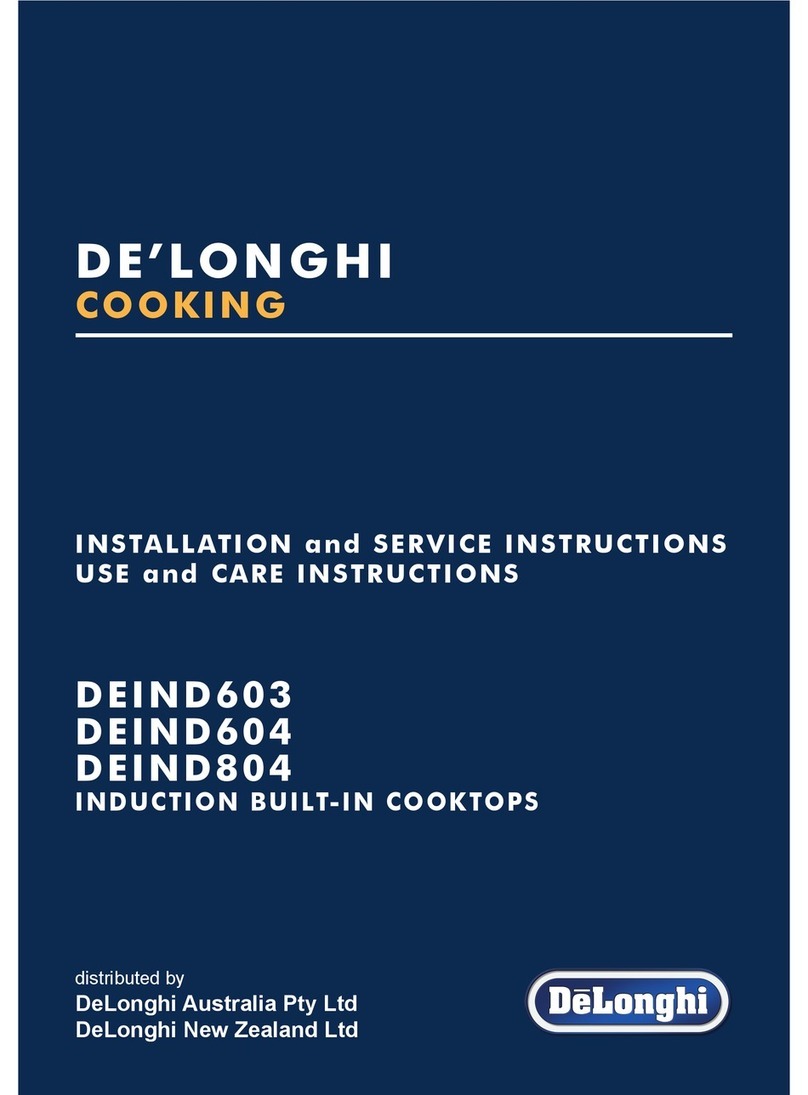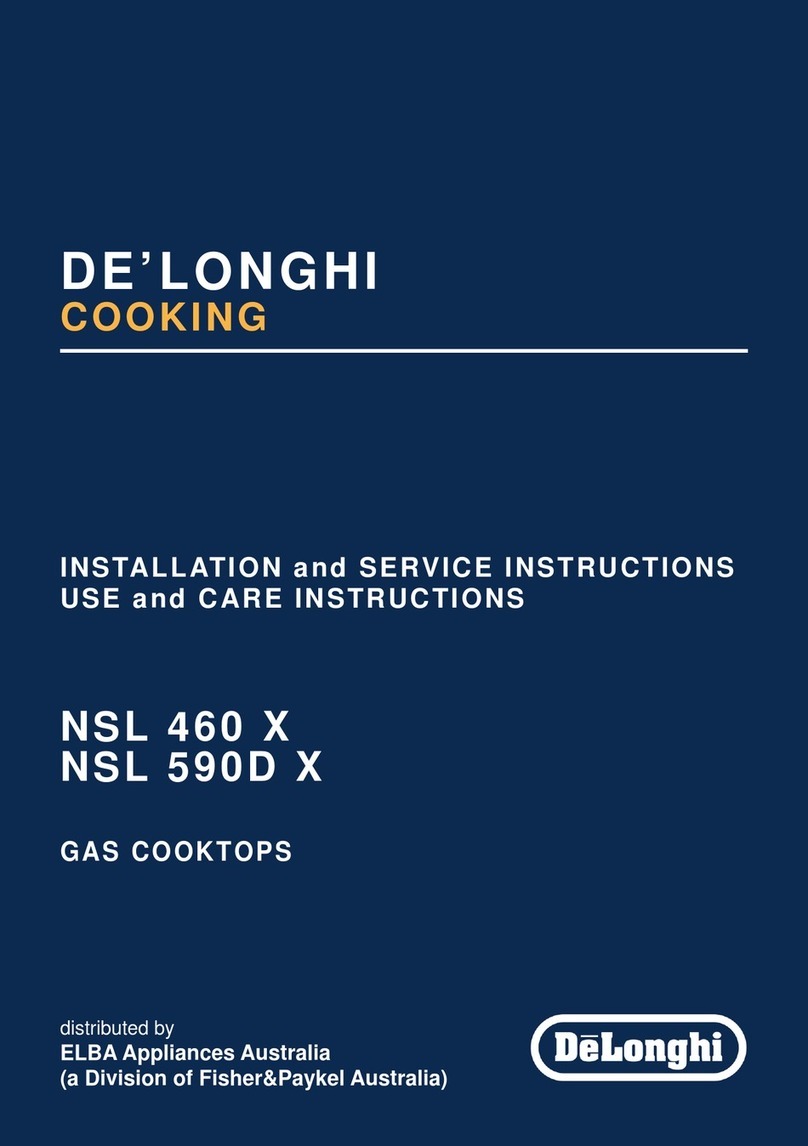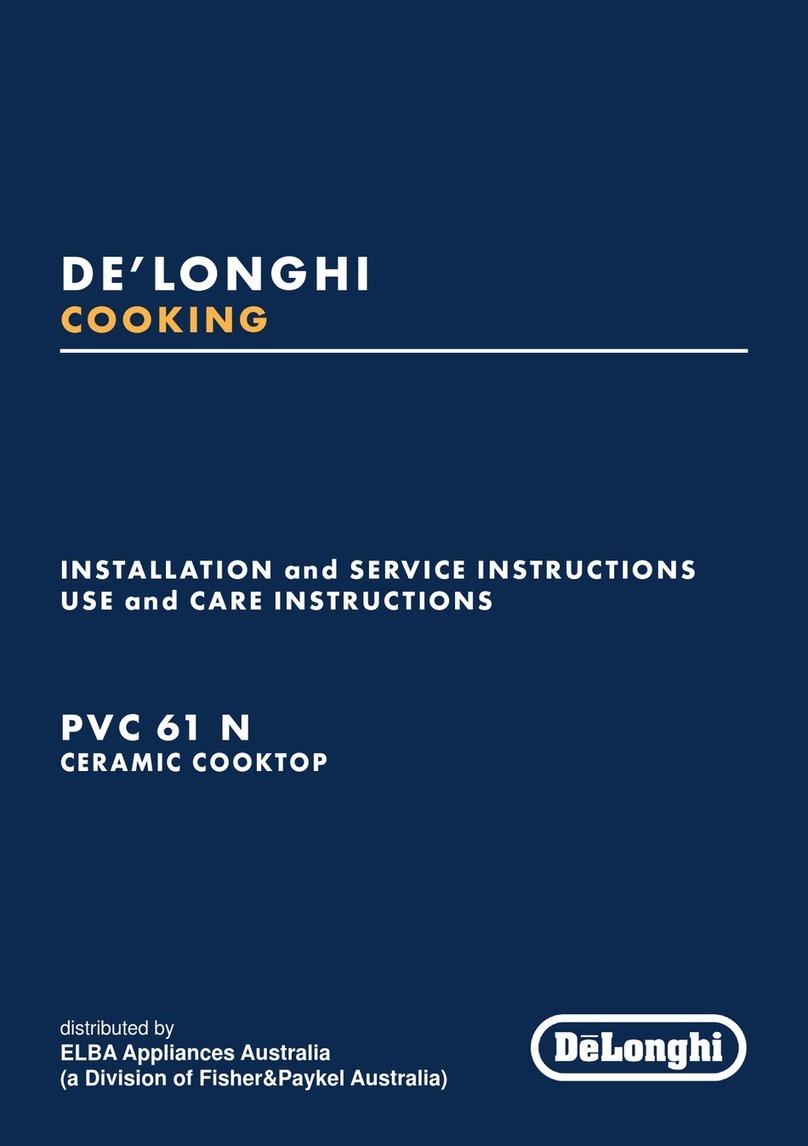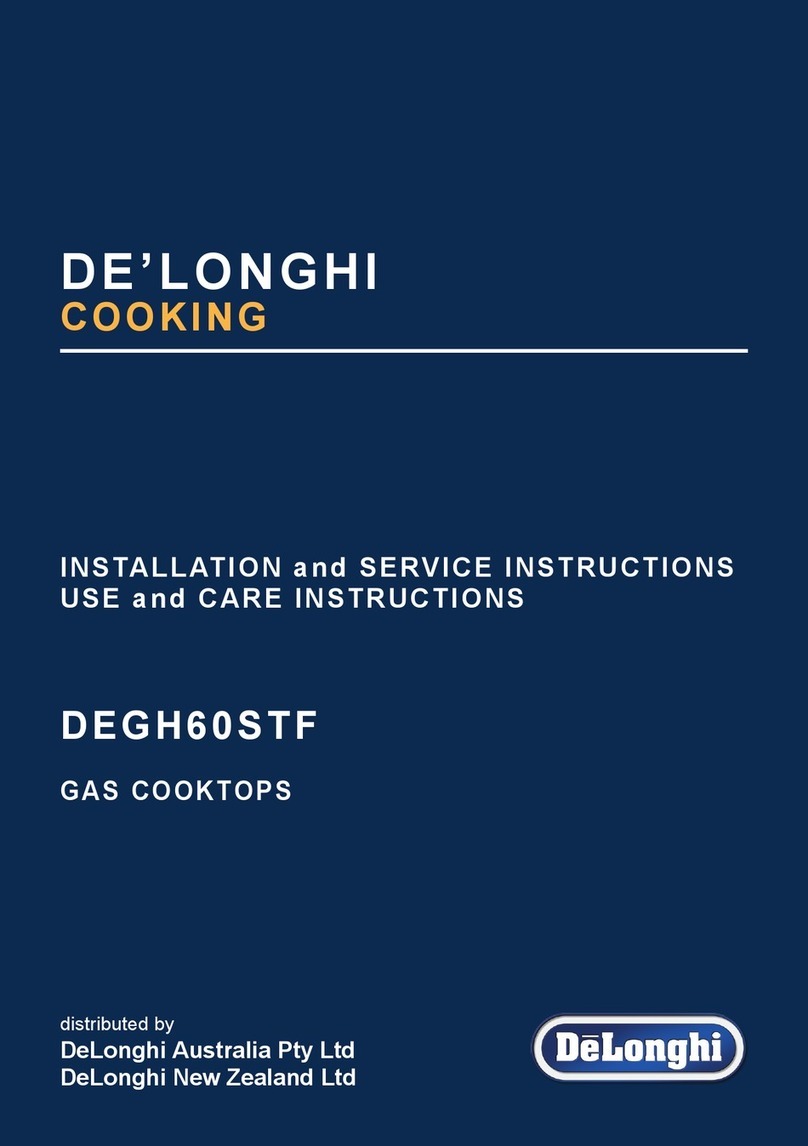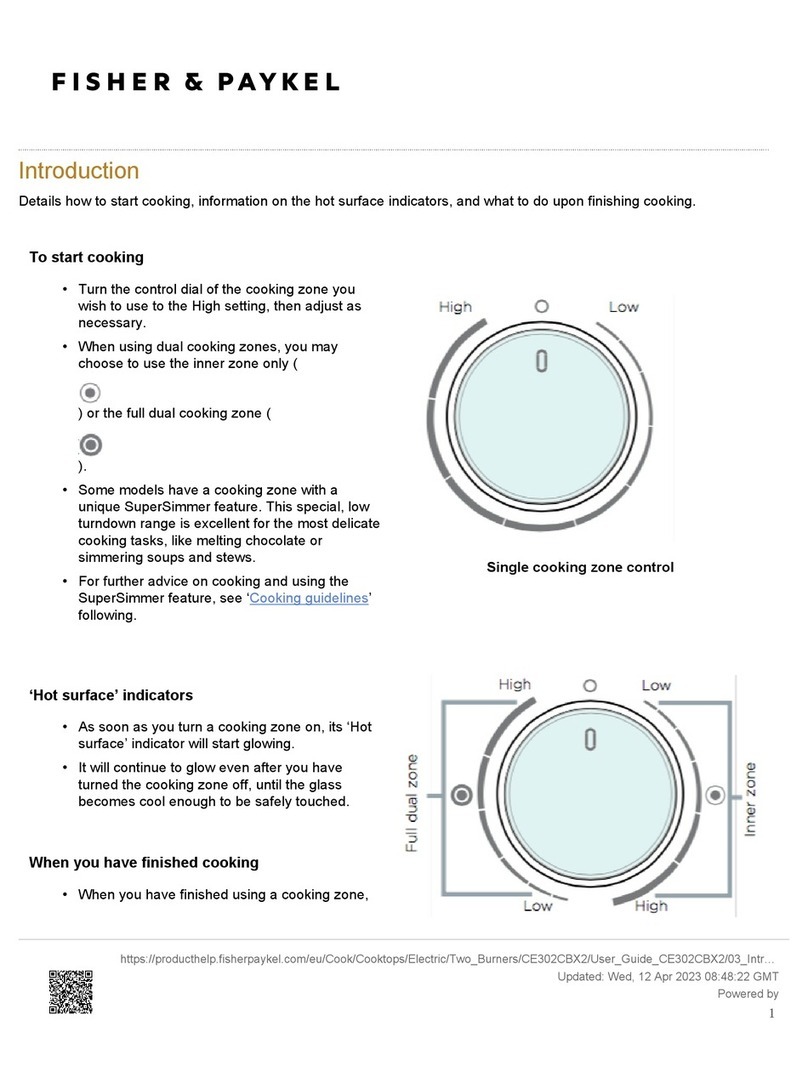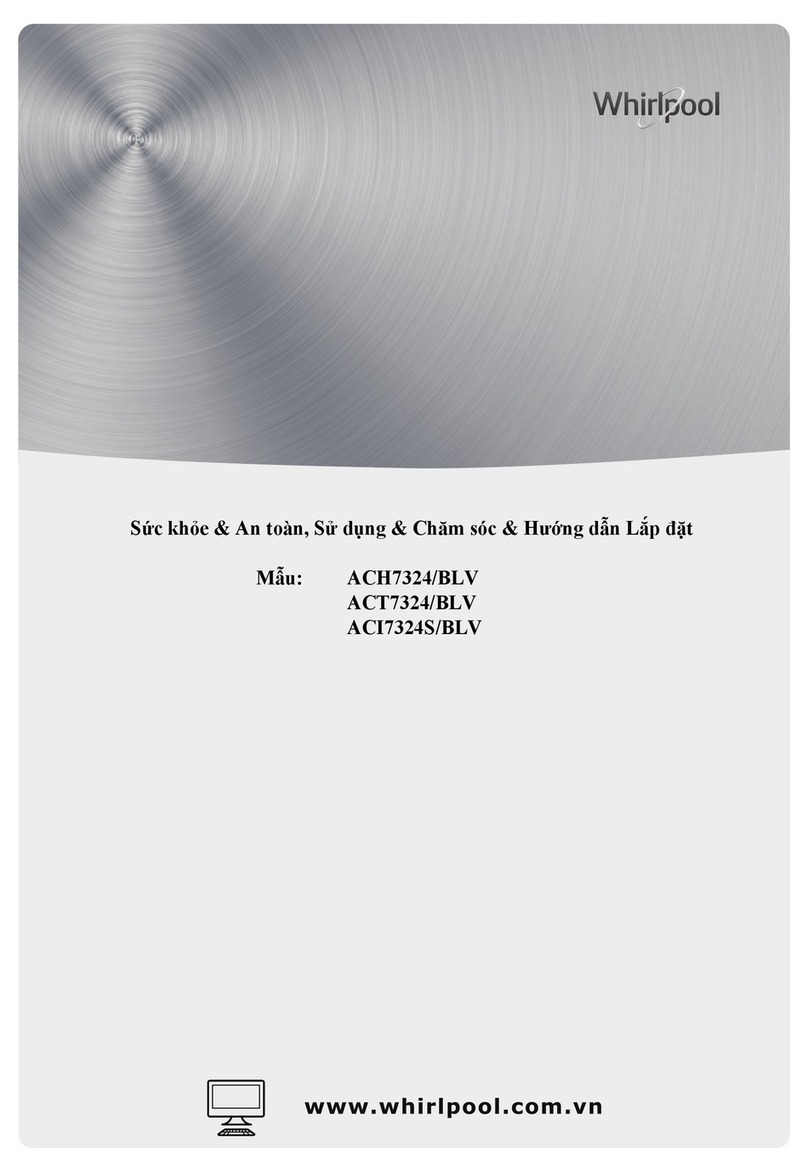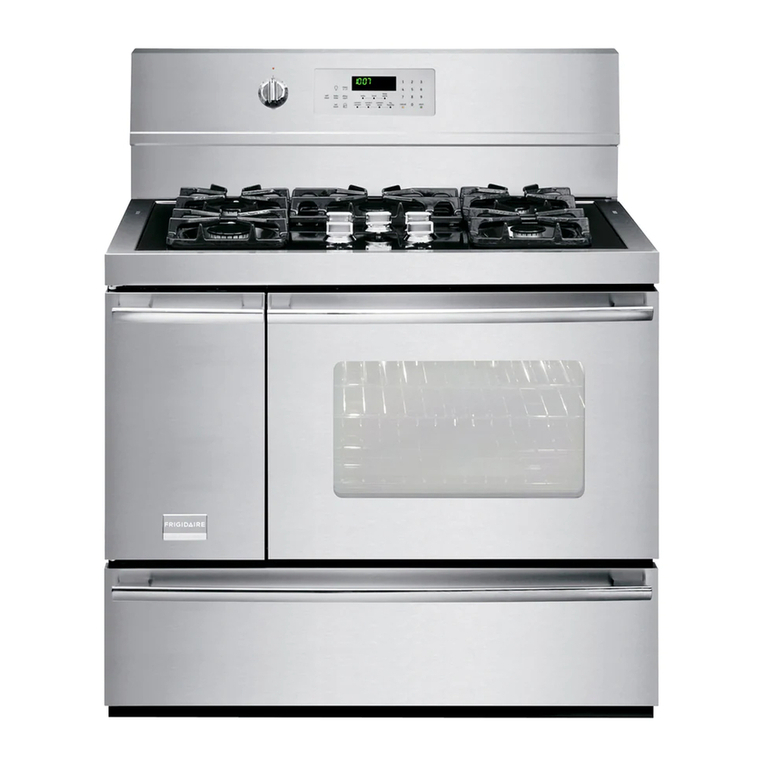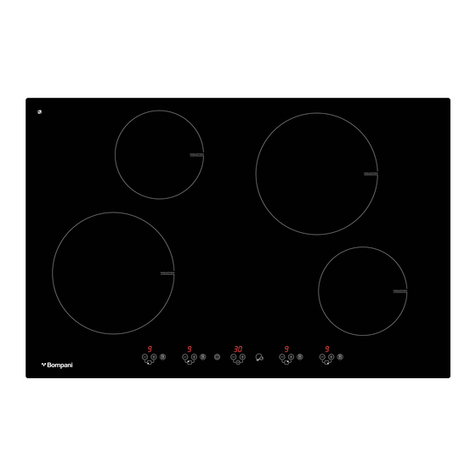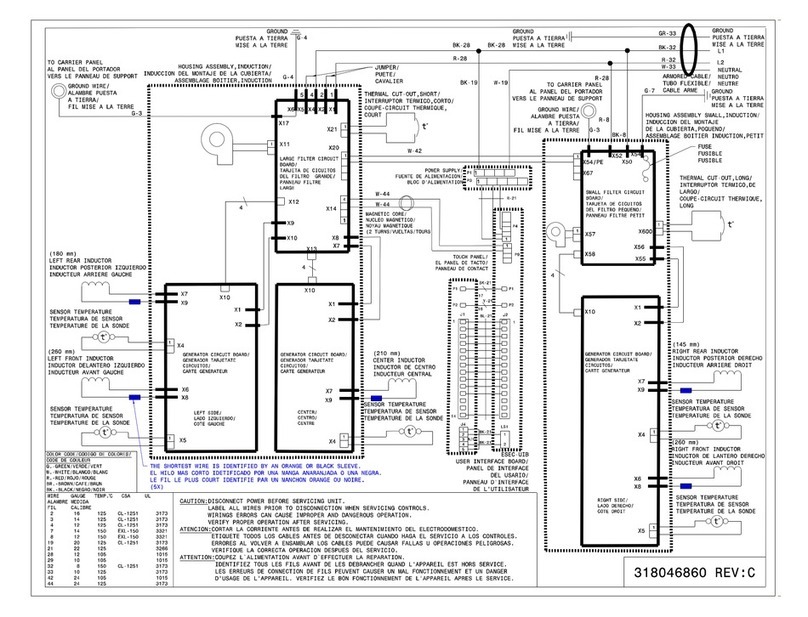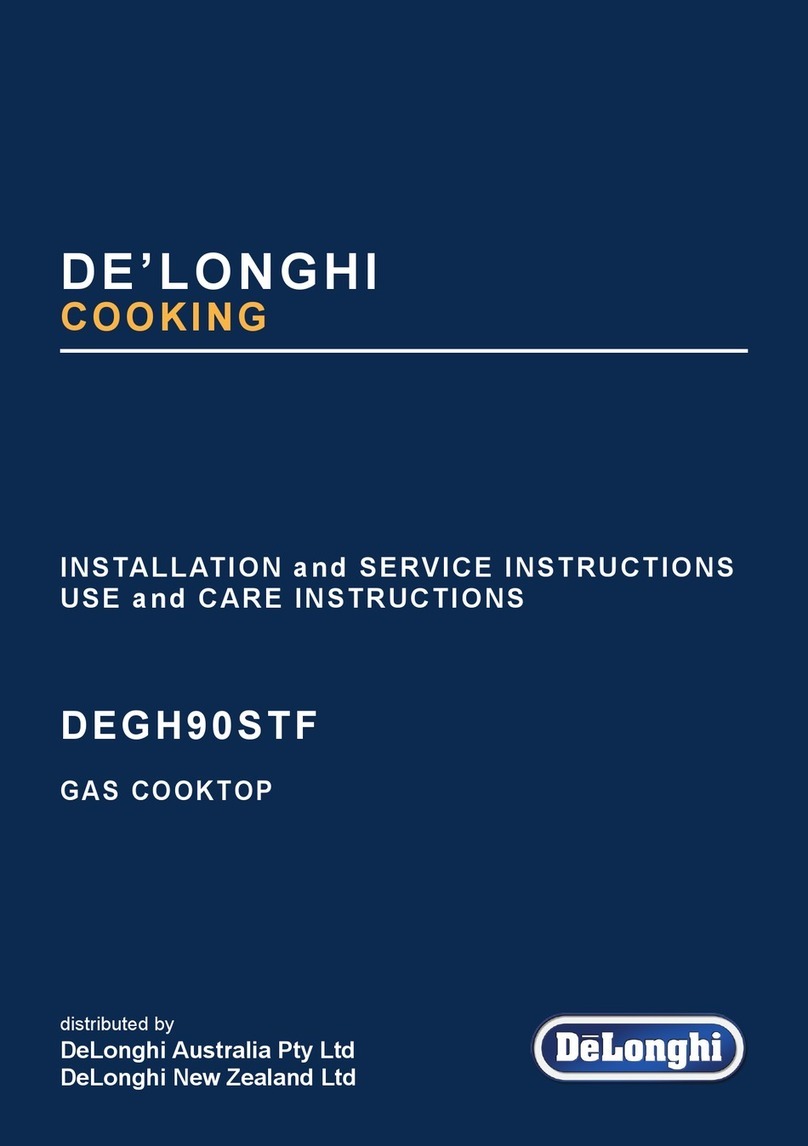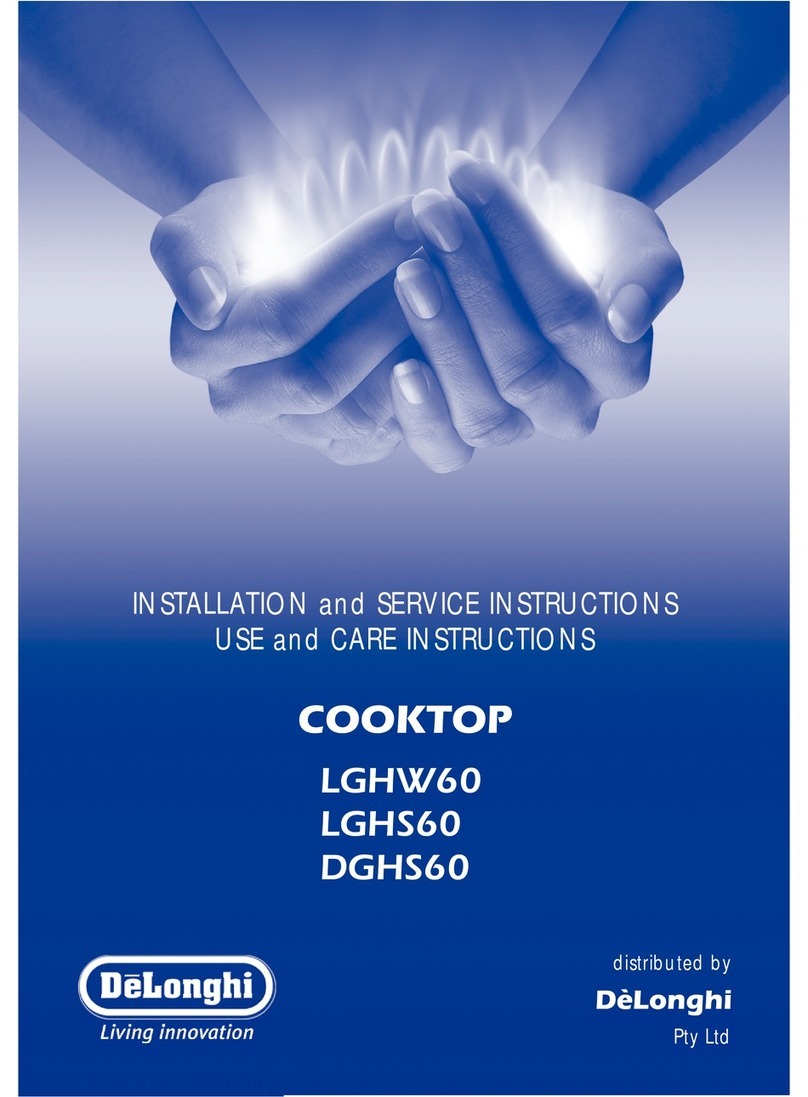6
INSTALLATION
CAUTION:
■This appliance must be installed in accordance with these installation instructions.
■This appliance shall only be serviced by authorised personnel.
■This appliance is to be installed only by an authorised person in compliance
with the current electrical regulations and in observation of the instructions
supplied by the manufacturer.
Failure to comply with this condition will render the guarantee invalid.
■Incorrect installation, for which the manufacturer accepts no responsibility, may
cause personal injury of damage.
■Always disconnect the appliance from mains power supply before carrying out
any maintenance operations or repairs.
FITTING REQUIREMENTS
This cooktop can be built into a working surface 30 to 40 mm thick and 600 mm deep.
In order to install the ceramic hob into the kitchen xture, a hole with the dimensions shown
in gure 1 has to be made, keeping in consideration the following:
■The cooktop shall not be installed directly above a dishwasher, fridge, freezer, washing
machine or clothes dryer, as the humidity may damage the cooktop electronics.
■If the cooktop is installed above an oven, the oven shall be provided with cooling fan.
The two appliances should be connected to the electrical supply with independent
connections.
■IMPORTANT WARNING! This cooktop requires adequate supply of fresh, cool
air to fully function. The base of the cooktop must have direct unrestricted
ventilation to the room where the cooktop is installed. Follow the requirements
of gure 3 or 4.
■There must be a distance of at least 650 mm between the hob and any wall cupboard
or extractor hood positioned immediately above (see g. 2).
■We would point out that the adhesive which bonds the plastic laminate to the
furniture must withstand temperatures not less than 150° C to avoid delamination.
■The walls of the units must be capable of resisting temperatures of 75 °C above
room temperature.
■Do not seal the cooktop into the benchtop with silicone or glue; this makes
future servicing difcult. Delonghi will not cover the costs of removing the
cooktop, or of damage caused by this removal.
■The walls surrounding the cooktop must be made of heat-resistant material.
■Do not install the appliance near inammable materials (eg. curtains).
WARNING
When correctly installed, your product meets all safety requirements laid down for
this type of product category. However special care should be taken around the
underneath of the appliance as this area is not designed or intended to be touched
and may contain sharp or rough edges, that may cause injury.
